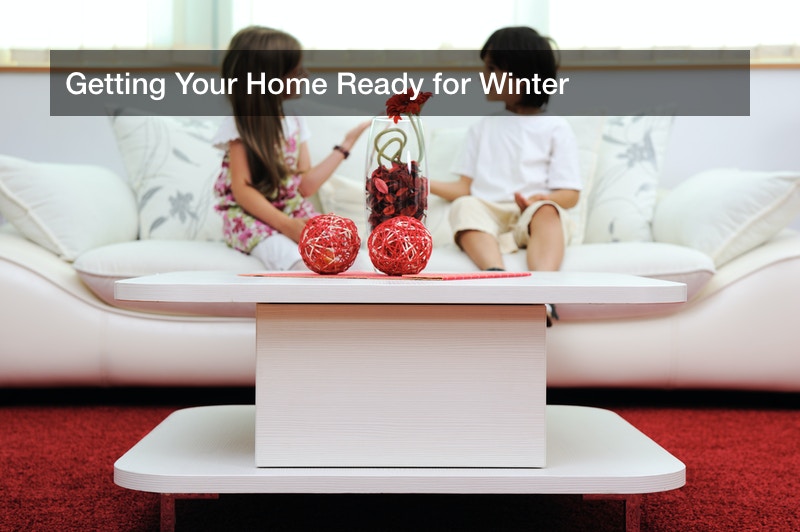
 The weather is unpredictable. Last winter, Winter 2019-2020, was one of the hottest on record — and cities across the U.S. still reported some of their coldest temperatures in decades. Indianapolis, IN recorded the coldest November 12 in 102 years, with temperatures topping off at just eight degrees Fahrenheit. Turner, MT and Dickinson, ND also experienced record lows early in the season.
The weather is unpredictable. Last winter, Winter 2019-2020, was one of the hottest on record — and cities across the U.S. still reported some of their coldest temperatures in decades. Indianapolis, IN recorded the coldest November 12 in 102 years, with temperatures topping off at just eight degrees Fahrenheit. Turner, MT and Dickinson, ND also experienced record lows early in the season.
These dramatic shifts prove that it is unwise to grow overly complacent. The weather can — and will — change on a whim. Be prepared for all outcomes, including a winter with record-breaking freezing temperatures.
What does it mean to be unprepared? Failing to winterize your home carries some very real risks. Without taking the proper precautions, you may be looking at outrageous utility bills, frozen and/or burst pipes, or even a carbon monoxide leak.
Save yourself the trouble and money. Learn how to prepare your home for winter, and be proactive about it. Take these steps now. Do not wait until winter is well underway.
Start With The Exterior
“Getting the exterior of the home ready for the cold winds, snow and ice is critical for keeping Old Man Winter out and keeping it warm and toasty inside,” President of Residential Equity Management Home Inspections, Reggie Marston tells Bob Vila. If you are wondering how to prepare your house for winter, taking another look at your home’s exterior is a great place to start. Follow these tips and tricks to winterize the exterior of your house:
- Keep an eye out for drafts and leaky doors and windows. According to Energy.gov, heating your home makes up the bulk of your energy bill (42%). Do not pay for heat that seeps out of your doors and windows.Check for leaks by scanning doors and window frames for any visible gaps or imperfections. Turn off the lights and shine a flashlight into any suspicious-looking cracks, chinks, or crevices. If beams of light shine through, you have a significant air leak on your hands (this method may not detect minor leaks). Another way to detect leaky doors and windows is to open them and shut a dollar bill inside them. If the dollar bill comes free easily and without any resistance, you are losing heat in your home.
- Install or replace weatherstripping as necessary.
- Double-check gutters. Make sure they are free of debris and that they are draining properly. Any rainfall — and eventually any melted snow — needs to drain away from your home. If excess rainwater or melted snow gets too close to your home or puddles on top of your roof or near your foundation, it can cause lasting structural damage.
- Scan your roof for missed or damaged shingles and run-down flashing. Replace any failing structures and seal any gaps with caulk or roof cement.
- Add insulation. While insulating your attic, crawlspace, and walls may cost a decent amount upfront, savings on electricity bills over time more than justifies the expense.
Complete Necessary Repairs
One of the most important steps to winterizing your home is to address any urgent repairs before the brunt of the cold weather hits.
Once again, start with your home’s exterior. Do not put off any residential glass repair. If you notice a crack in your window, do something about it now. Cracks may be caused by stress, impact, or pressure. Stress is responsible for most cracks that go unrepaired. The reason being that stress cracks may be small, minor, and all but unnoticeable. Even if these cracks appear to be “no big deal,” it is important to repair them before the cold weather sinks in. Frigid temperatures will cause windows to contract and expand, and those rapid changes can make cracks worse — a lot worse. Making repairs now will prevent you from having to replace windows altogether.
Similarly, concrete or stone paths, walkways, or pavers will also expand and contract in extremely cold weather. “A loose patio stone or paving stone will only get worse over the winter as the natural freeze and thaw cycle of the soil hoists it farther out of place in a process called frost heave,” Consumer Reports writes. Replace these features on your own, or hire a contractor to get the job done while the weather is still relatively warm.
If you have a chimney, this is another major repair you want to make before winter sets in. Keeping chimneys in good repair prevents chimney fires and prevents carbon monoxide leaks that originate from your chimney. Unrepaired voids and cracks in your chimney may pose a fire hazard.
Check Your Heating System
When learning how to prepare your house for winter, you should learn that HVAC maintenance plays a big role in adequately preparing. What does maintenance entail? Work with a trusted HVAC company to complete the following:
- A routine inspection of your HVAC system. At an absolute minimum, HVAC systems need to be inspected at least once per year — twice a year is even better. Bring in contractors to inspect systems before problems rear their ugly heads during the cold winter months.
- A thorough residential HVAC system cleaning. Did you know that it is prudent and necessary to vacuum heating components and vents in your HVAC system to deep clean them? A professional can safely and effectively do this for you. Ensuring that HVAC parts are clean also ensures that they are running at their best. Dirty parts may be clogged, overworked, and/or overstressed, ultimately working less efficiently and driving up your energy bills.
- Swap out old filters for new ones. The average home with at least two or three people needs new filters every three months. If you have a pet, change filters every two months. If you have multiple pets or anyone in your home suffers from allergies, it is most effective to change filters every 20 to 45 days. Of course, those are the recommendations for balmy or moderate temperatures. In the thick of winter, everyone should change their filters at least once a month.If you want to do a visual check or inspection of your filter, Money Talk News recommends holding a used filter up to the light. If light shines through, your filter is still working. If you cannot see any light through the filter, replace it with a new one.
- Get furnaces inspected. Just like a chimney in disrepair, an old or malfunctioning furnace can be the source of a carbon monoxide leak. Before winter, protect your home by getting your furnace inspected. This is also a good time to double-check that you have a carbon monoxide detector installed and, if you do, that its batteries are working.
Fix Your HVAC System
Here is another important note on how to prepare your house for winter: simply maintaining your HVAC system is not enough. A fresh filter, thorough cleaning, and biannual inspection is a great start — but, at this point, your work is still incomplete. In order to prevent air leaks and carbon monoxide leaks, prevent fire hazards, keep your family comfortably warm, and keep utility bills desirably low, you need to complete any HVAC-related repairs as soon as possible.
To start, seal ducts and vents to prevent costly leaks. “Heating ducts typically waste 20% to 30% of the heated air they carry, losing it to leaks and poor conduction,” according to Money Talk News (MTN). Focus on the areas most often responsible for leaks. That means where ducts meet floors, ceilings, and walls.
Prioritize any gas furnace repairs as well. Signs of problems include the furnace not producing heat or producing too little heat, the furnace making excessive noise, the furnace cycling on and off repeatedly, and/or the blower running near-constantly. An inspection should identify any major problems. However, if you recognize any of these telltale signs of trouble, don’t put off repairs any longer.
If you are wondering how to prepare your house for winter as effectively as possible, do not skip this step. Contact heating services about any repairs now before winter and the busy holiday season.
Take Care Of Your Plumbing
An article about how to prepare your house for winter would be remiss without mentioning plumbing and pipes. It is common knowledge that residential plumbing can freeze over without proper care. Unfortunately, too many homeowners do not know how to properly care for their pipes and prevent problems in the winter.
First, know that outdoor water sources are the most likely to cause a problem. Drain hoses and sprinklers and store them inside. Turn off outdoor faucets. Then, “For hose bibs, shut off the water supply valve inside your house or basement that feeds the line, then open the outdoor spigot (any water trapped inside will drain out),” Consumer Reports explains.
Insulate hot water pipes, particularly in areas where temperatures may get especially cool, like the basement. Head out to the store to find “pre-slit, hollow-core, flexible foam pipe insulation,” MTN recommends. Flexible foam sleeves are easy to use and typically fit snugly and securely over your pipes. Make sure to measure pipes and shop for insulation using these measurements for the best possible fit.
Another possible solution for insulating chilly or at-risk pipes is heat tape. Heat tape is available in several different varieties. Some heat tape is made out of braided fiberglass. The fiberglass collects heat and transfers it to your pipes. It does not include a plug or thermostat. Some types include a thermostat you plug into an outlet. When the air drops below a preset temperature, the heat tape activates and, with the help of electricity, warms your plumbing. This kind needs to be carefully monitored for wear and tear, and many experts do not recommend leaving it on 24/7.
Pay attention to any signs that something is amiss with your plumbing. If faucets sputter when turned on, do not flow or take a while to flow when turned on, or spray erratically, call a plumber to look at your pipes.
Do not second-guess yourself. You hear a lot about pipes because it is one of the most important steps to follow when learning how to prepare your house for winter.
Don’t Forget The Finishing Touches
When reading up on how to prepare your house for winter, know that small steps can go a long way.
For example, carpet cleaning before winter is a wise and advantageous move. During winter, HVAC systems run just about all of the time. Pets are indoors that much more often. This all means that dust, particles, and allergens are much more likely to get trapped in your carpet. Professional cleaning services can deep clean carpets, furniture, and upholstery for you, ensuring that heavily trafficked carpets and frequently used linens do not trigger or aggravate your allergy symptoms.
Carpets aren’t the only feature you need to pay attention to. Did you know that the right paint color can help warm up your home? Do not just learn the basics about how to prepare your house for winter. Learn the secrets, too! One of them is using interior paint to your advantage.
“The color of your home can affect heat absorption,” Allstate writes. “Dark, dull colors can absorb 70 to 90% of the sun’s radiant energy, which can then be transferred into the home.” Paint walls black, charcoal gray, chocolate brown, or midnight blue to absorb as much of the sun’s energy as possible. If rooms get too warm, don’t worry. Use heavy curtains or drapes to cover up windows and cool the room down as necessary.
Talk to residential painting services about the best colors to trap heat inside your home.
Learn how to prepare your house for winter. It is best to start with the exterior of your home, and work your way in. Maintain and repair HVAC systems, complete major repairs to prevent carbon monoxide leaks, wrap plumbing, and don’t forget finishing touches, like painting walls and deep cleaning carpets.
According to the Environmental Protection Agency (EPA), we spend a full 90% of our lives indoors. Make that time as safe and as comfortable as possible. Start by following the tips and tricks above.







